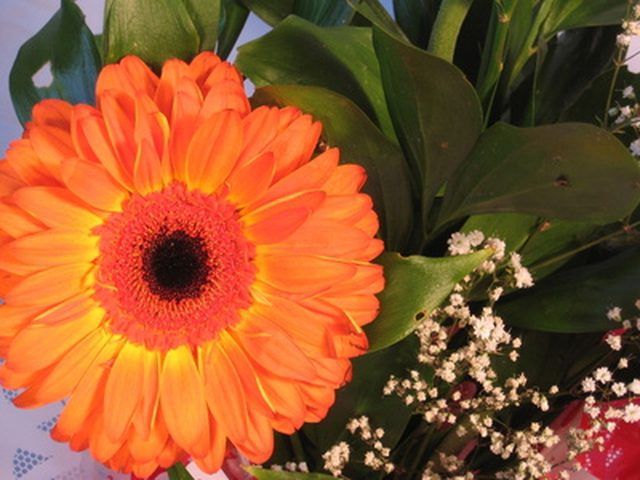Bulbs
Flower Basics
Flower Beds & Specialty Gardens
Flower Garden
Garden Furniture
Garden Gnomes
Garden Seeds
Garden Sheds
Garden Statues
Garden Tools & Supplies
Gardening Basics
Green & Organic
Groundcovers & Vines
Growing Annuals
Growing Basil
Growing Beans
Growing Berries
Growing Blueberries
Growing Cactus
Growing Corn
Growing Cotton
Growing Edibles
Growing Flowers
Growing Garlic
Growing Grapes
Growing Grass
Growing Herbs
Growing Jasmine
Growing Mint
Growing Mushrooms
Orchids
Growing Peanuts
Growing Perennials
Growing Plants
Growing Rosemary
Growing Roses
Growing Strawberries
Growing Sunflowers
Growing Thyme
Growing Tomatoes
Growing Tulips
Growing Vegetables
Herb Basics
Herb Garden
Indoor Growing
Landscaping Basics
Landscaping Patios
Landscaping Plants
Landscaping Shrubs
Landscaping Trees
Landscaping Walks & Pathways
Lawn Basics
Lawn Maintenance
Lawn Mowers
Lawn Ornaments
Lawn Planting
Lawn Tools
Outdoor Growing
Overall Landscape Planning
Pests, Weeds & Problems
Plant Basics
Rock Garden
Rose Garden
Shrubs
Soil
Specialty Gardens
Trees
Vegetable Garden
Yard Maintenance
What Do Flowers Signify?
What Do Flowers Signify?. Humans have cultivated flowers for centuries. Flowers make frequent appearances in artwork and literature, such as in the painting "The Kiss" by Gustave Klimt and in the famous Ophelia drowning scene in Shakespeare's "Hamlet." Flowers are symbols of birth and death, and have come to signify changes in important life events...

Humans have cultivated flowers for centuries. Flowers make frequent appearances in artwork and literature, such as in the painting "The Kiss" by Gustave Klimt and in the famous Ophelia drowning scene in Shakespeare's "Hamlet." Flowers are symbols of birth and death, and have come to signify changes in important life events because their life cycles closely represent the life cycles of humans.
History of Flowers
Evidence shows that flowers have a long history as an emotional and social symbol. Jeffrey Somer, an archaeologist from Cambridge University, found pollen in neanderthal graves (see reference 3). This indicated that primitive people used flowers in burial rituals. Egyptian vases were often painted with daisies, and 4000-year-old golden hairpins with daisy-like shapes were excavated on the island of Crete. Dioscorides, an ancient Greek physician, wrote the first known book, called "De Materia Medica" on the medicinal properties of plants, with detailed flower diagrams that included instructions on how to cure various ailments. In the 1700s, the popular doctrine of divine beneficence was an explanation that God placed flowers on the earth because they were pleasing to humans. Later, the scientists Christian Konrad Sprengel and Charles Darwin found that the characteristics of flowers were directly related to their means of reproduction. In modern times, people use flowers for a variety of reasons, including aesthetic enjoyment, life events and environmental study.
Symbolism
In Europe during the 19th century, coded flower books were published that allowed people to relay complex messages using different types of flowers and colored buds as symbols. For example, a white rose petal would mean "no" and a red petal "yes." Different flowers have different symbolic meanings attached to them. An iris symbolizes wisdom and faith. Orchids symbolize love and beauty. The lily is a symbol of fertility, and crowns of lily were often worn by brides in Greek weddings. The rose symbolizes love and desire, and today lovers will often present to each other bouquets of roses. Sunflowers are symbols of warmth and adoration. Violets are considered good luck gifts. Flowers in many cultures are symbols of life and death, because of their transient nature, and as such are often present during funerals and weddings.
Mythology and Religion
Flowers are featured in many mythological stories. Some cultures have goddesses of flowers, such as the Roman goddess Flora and the Greek goddess Chloris. The Aztec goddess of fertility and sexuality was called Xochiquetzal, or "flowers standing upright." Flowers were often left in shrines or temples as offerings. In Greek mythology, after Adonis is killed by a boar, red anemone flowers sprout up from his shed blood. Since anemones represent blood, there are anemone flowers in some paintings of Jesus' crucifixtion. In ancient Egyptian mythology the goddess Iris was born from a lotus flower, and Buddha is often drawn sitting on a throne made out of lotus blossoms. The poppy flower, which was used to create the sleep drug opium, is associated with the Greek god of sleep, Hypnos, and the Greek god of dreams, Morpheus.
Gifts
Flowers are often given as gifts and can signify feelings of romance or friendship. Women traditionally receive flowers from men as a romantic gesture, though flowers are often given to newly married couples, people in mourning or the elderly in nursing homes. A study published by researchers in the departments of psychology and genetics at Rutgers University, found that men and women who received flowers as gifts afterwords reported more positive social interactions and elevated moods. The published report of the study hypothesized that flowers evolved to induce emotions in humans as a survival technique, so that people would continue to cultivate them in order to bring themselves happiness and be able to give them as gifts to induce happiness in others.
Astrology
According to the tradition of astrology, each Zodiac sign has a preferred type of flower. For those who follow astrology, knowing the astrologically preferred flowers of a friend can be a good way to select a flower as a gift. Aries prefer honeysuckle flowers, Taurus like roses and poppy, and Gemini like Lavender. Sunflowers are the preferred flowers of Leo, Aquarius likes orchids, and Scorpio prefer dark red flowers such as geraniums. For Libras, pick bluebells, and Pisces enjoy water lilies. Virgo like small yellow flowers such as buttercups, and Cancer enjoy white flowers.